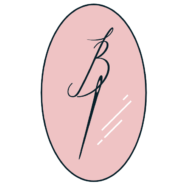Estimated reading time: 9 minutes
Table of contents

Threading aids for needles: At a certain time in your life, your eyesight will dwindle, we all get it sooner or later. You will think something like: why can’t I get the thread in the needle?
But do not fret, there are a lot of different tools for the job. Increasing the light on your work or investing in a magnifying lamp is also a good idea
Threading aids for hand sewing needles or sewing machine needles
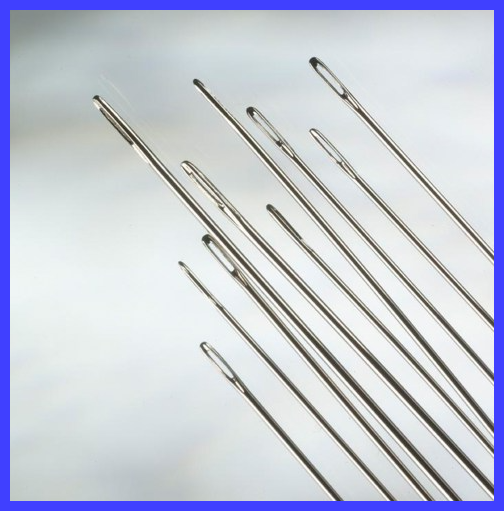
We differentiate between the theaders for hand sewing needles and machine needles. Because in the machine they are stationary and the hand threaders do not work as well on them. And vice versa, machine threaders do not work for hand sewing needles. So that is why two different categories…
Hand sewing needles threading aids
Say you are sewing your new skirt and you want to sew in the hem. So you have ironed the hem and take out your sewing needles. For the life of you, you can not seem to get the needle threaded… Sounds familiar?
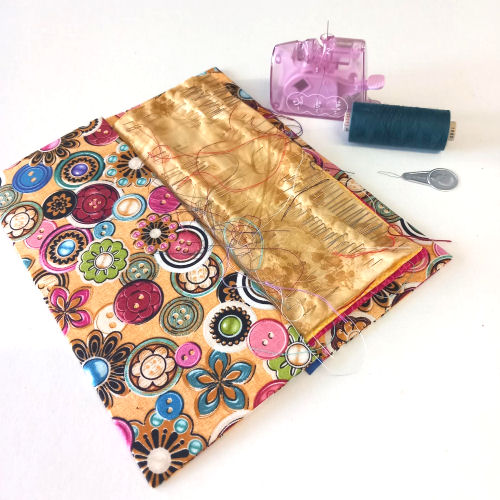
Try to cut the end of your thread aslope. Wetting the end can sometimes work too, or turning the needle so you thread the eye from the opposite side. The eye of the needle is punched into the needle which means the two sides are not the same. If you thread in the punch direction it will be easier to get through. So if it does not work, turn and try again…
Another way is to pinch the end of the thread between thumb and forefinger and leave a small piece sticking out. Now you push the eye over the threads end. You will have to be able to see the threads end. If you don’t, try extra light, a magnifier or magnifying lamp/p>
Threaders and special needles
Besides light and magnification there are a wide range of theaders available. From the simple one with the granny on it up to the desk needle threader by clover.
Both can be found in the picture below: the simple threader and the deluxe desktop version…
How to use a threader: The desk needle threader stands on your desk, put the needle in the slot, eye down. Lay the thread in the threadslot and press the lever. Now the threader will push the thread through the needles eye. Take out the needle and then you see the loop. Pull the loop through and you have a threaded needle Please note: The desk needle threader only works with thin needles
Click the button below to see the video of clovers desk needle threader:
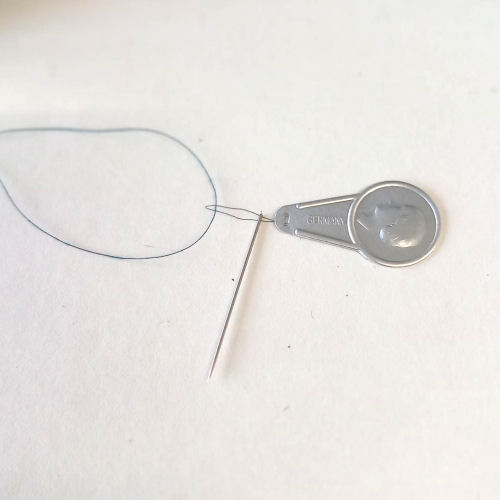
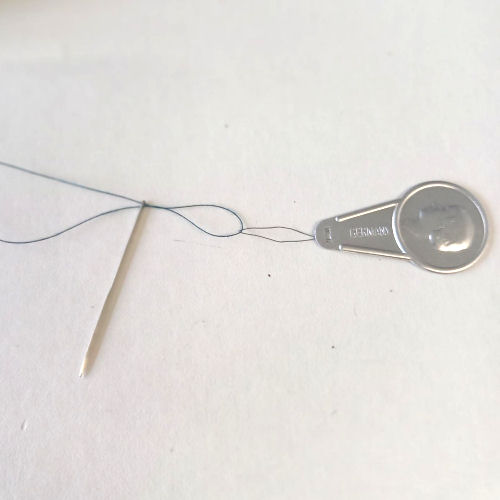
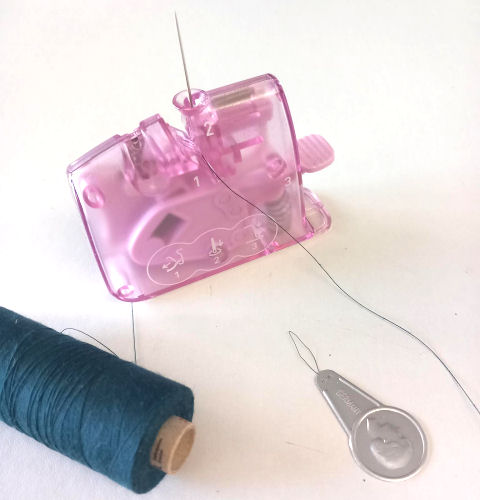
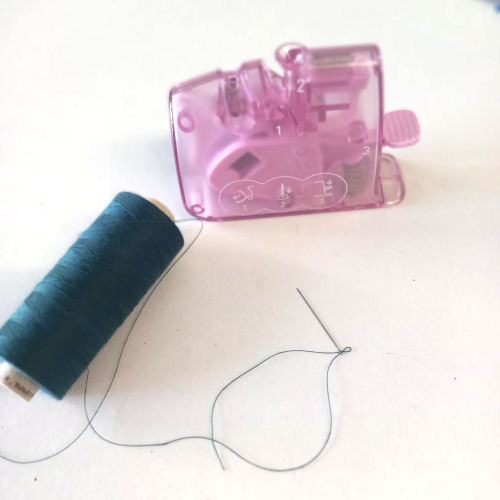
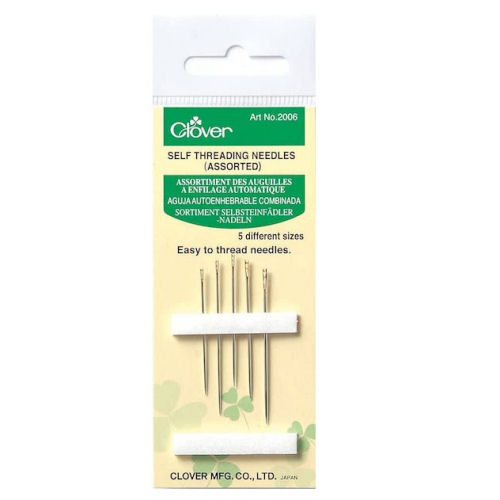
Last option is the special blind needles. These have many names like: handicap needles, blind needles, elderly naalden, needles for old people, open eye needles, easy thread naalden or self threading needles by Clover. I will have forgotten a term, I am sure of it… 😉
These needles have an open eye in wich you pull the thread, so to speak. The only disadvantage is that you can pull them out like that too. But that happens with normal needles too, right?
Sewing machine needle threading aids
Threading a needle in your sewing machine works differently from a hand sewing needle. First you can try the trick with the white piece of paper. The sewing machine foot is the same colour as the needle, so if you look through the eye, you see the same colour behind it. Place a piece of paper behind the needle makes it easier to see. I use my finger as well
Some sewing machines, mostly the newer ones, have a built in threader. Works fine but sometimes it will not do the trick. I have cursed mine on occasion. It was bent slightly and did not work correctly anymore. You can also try a new needle because if the needle is bent, your threader will not work also
Threaders and special needles
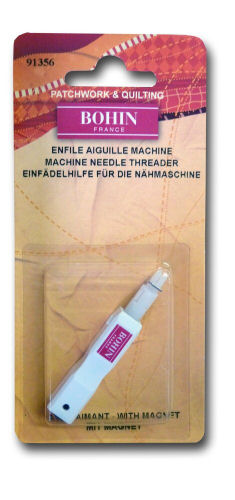
The advantage of an unattached threader is that is does not matter where the eye is, wether the needle is bent or straight… These threaders are plastic and you place the thread in at the front. Put it on the needle and slide down. When you reach the eye, the iron threadingpiece will thread your needle. Just like with the desk needle threader a small loop will appear at the back of the needle. Pull it through and you can start sewing…
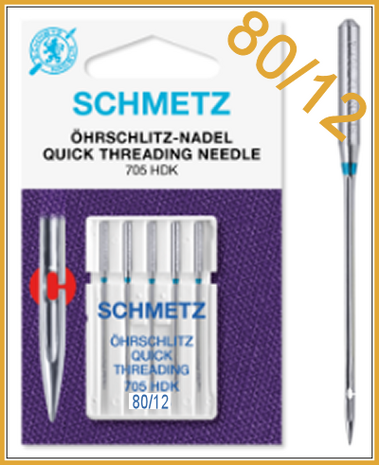
And there are special sewing machine needles for blind or visually impared people. These have, just like with the hand needles, an open eye. The opening is located at the right side of the eye. Handicap needles are number 80/12 which can be a little thick for thinner fabrics. Try the topstitch 70/10. Topstitch needles are made for topstitching thread and effect threads and have a large eye. And that gives you more room to thread the needle!
Tip:
when using a topstitch needle you may have to adjust the tension of the sewing machine,
specially when using thicker threads
Threaders for overlock needles
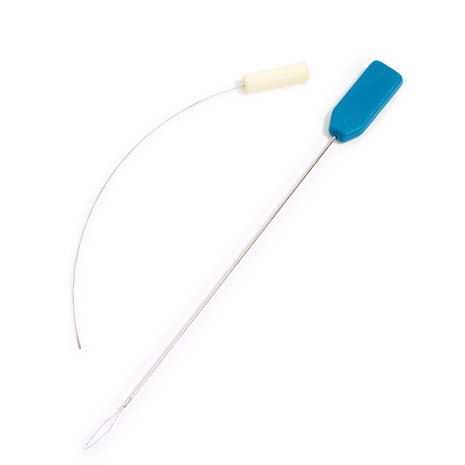
The overlock or coverlock machine threads differently from normal sewing machines. They can be tricky to thread. Fortunately prym has got the solution: special threaders for the overlocker. These are longer and that is what is great about them, you have a lot less room when threading the overlock or coverlock machine
Would you like to thread your overlock machine but is it too much work? Try knotting the threads to the already threaded threads instead of pulling everything out and starting over. You can sew until the knot comes to the needle eye, cut the thread and reinsert it. Or if you have an overlocker with a special tension release button like mine, press the button and pull througt the threads. Again until you get to the needles eye, cut and reinsert…If your thread is thin enough you can pull the knot through the needle sometimes too. Just be carefull…
Share:
